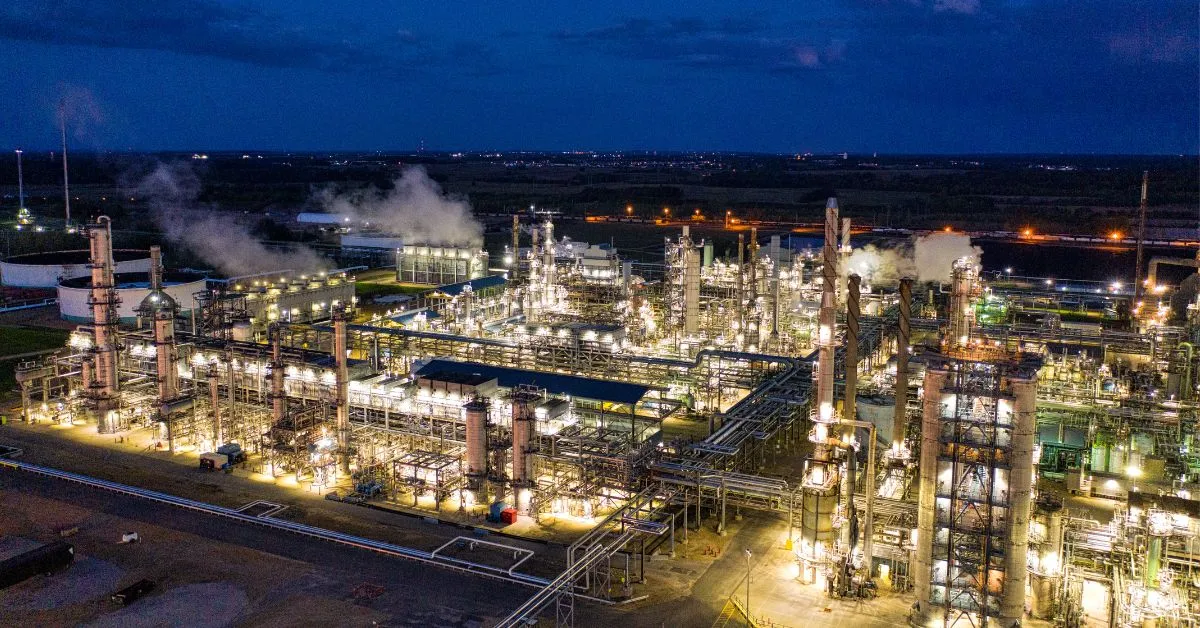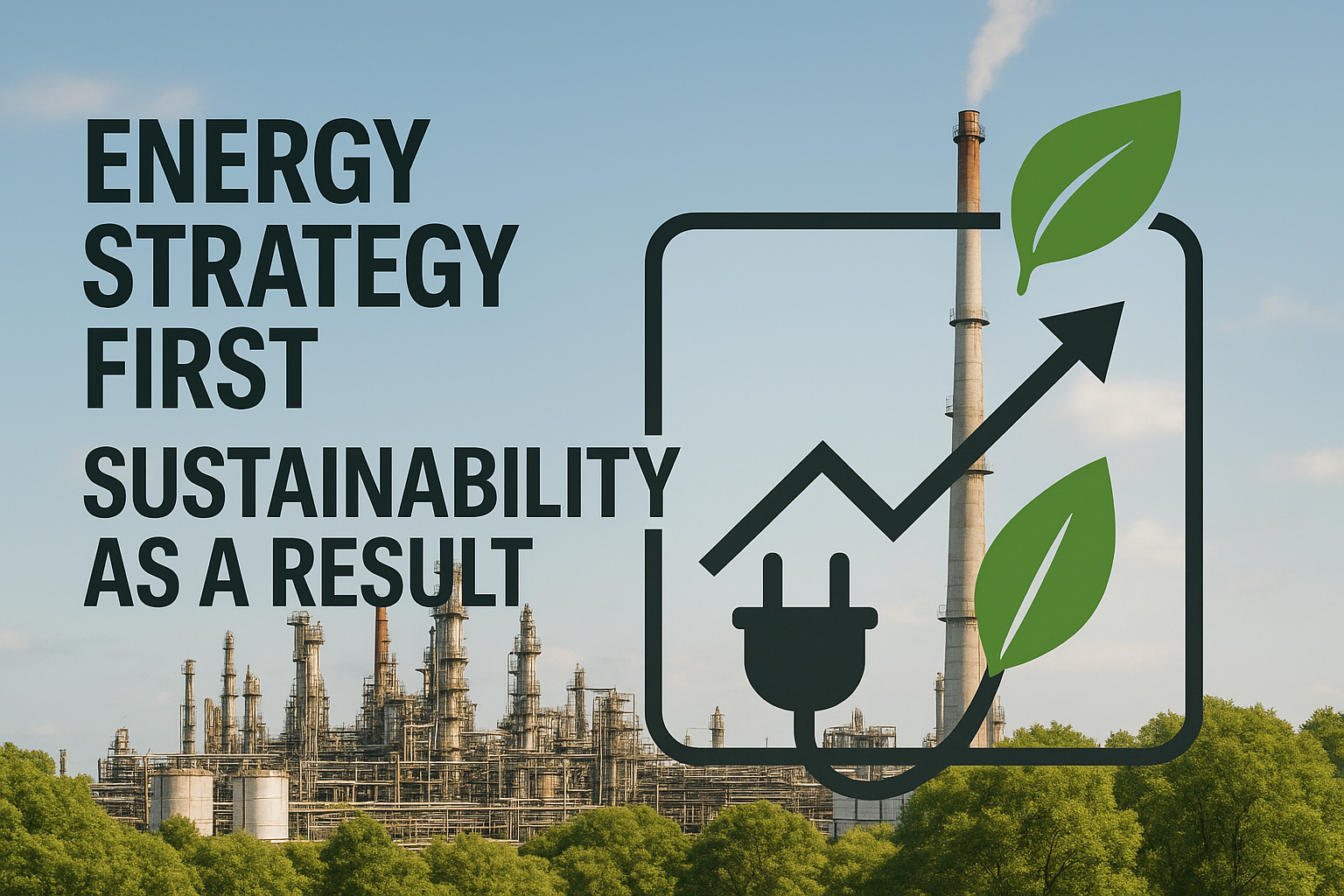Profit margins on refined products sit razor-thin, and every unexpected shutdown or energy spike hits EBITDA directly. Cascading equipment failures can drain millions per day across the sector, yet some companies have significantly reduced unplanned downtime after deploying AI-powered systems. Real-time optimization models show promising results in lifting production by continually adjusting wells, heaters, and separation units as conditions shift.
The challenge: many assets still run on aging control logic that can’t adapt to volatile price swings or tightening emissions requirements. Real-time industrial AI bridges this gap, learning from plant data and writing optimal setpoints back to the distributed control system (DCS). The result is measurable bottom-line improvement and a sustainable competitive edge.
Increase Yield from Every Barrel of Crude
Refined-product crack spreads keep shrinking, and volatile feedstock swings intensify the gap between plan and actual value. Under this market pressure, every extra drop of premium product matters.
Real-time AI can monitor temperature, pressure, and flow signals from distillation columns and downstream fractionators, then adjust cut points as crude quality shifts. By continuously balancing trays and reflux, it guides more of each barrel into higher-margin gasoline and diesel streams while maintaining operational constraints.
Adoption is accelerating downstream as operators move beyond traditional advanced process control (APC) toward closed-loop optimization. Margin improvements can translate to millions in annual profit for a refinery. These yield improvements flow directly to EBITDA, strengthening competitiveness regardless of market conditions.
Slash Energy Costs Without Sacrificing Output
While yield optimization maximizes product value, energy management tackles your second-largest expense. Fuel often trails only crude as your biggest cost, with fired heaters and furnaces devouring vast amounts of natural gas.
Industrial AI keeps those flames in check by continuously adjusting air-to-fuel ratios, coil outlet temperatures, and draft pressures as feed quality or ambient conditions shift. Refineries and gas plants that deploy this approach commonly see a reduction in heater fuel use, trimming millions from yearly utility bills while staying on target for throughput.
In midstream gas processing, AI-enabled optimization lowers energy consumption enough to knock several percentage points off total operating costs, all without requiring engineers to juggle endless set-point tweaks.
Beyond the immediate savings, burning less fuel curbs CO₂ emissions, helping you meet tightening sustainability goals while converting wasted BTUs into bottom-line advantage.
Reduce Giveaway and Product Quality Variance
Energy savings create immediate value, but product quality consistency builds lasting profitability. Giveaway happens whenever you make products better than the contract requires.
Each incremental cushion erodes margin. Real-time AI models can shrink that cushion by learning your plant’s historical baselines and updating spec limits every few seconds instead of once per shift.
Plants adopting AI-enabled process optimization can expect markedly fewer off-spec events and tighter spec windows, even as feed qualities fluctuate and units swing in and out of constraints. The result is less re-blending, lower blending component costs, and fewer penalties.
Minimize Unplanned Downtime and Lost Production
Beyond quality improvements, operational reliability becomes crucial for sustained profitability. Real-time optimization works best when paired with early-warning analytics. AI models track vibration, pressure, and temperature around the clock, detecting subtle deviations long before alarms trigger and suggesting corrective moves in real time.
Bringing that intelligence into daily operations can reduce outages significantly. Process industry leaders adopting AI-driven monitoring across large asset portfolios can expect substantial reductions in unplanned downtime.
AI also speeds disturbance recovery. Pipeline operators using advanced monitoring systems can identify corrosion risk early and guide faster, safer restarts, reducing downtime substantially. Fewer shutdowns mean steadier revenue, stronger customer confidence, and a direct boost to EBITDA.
Extend Equipment Life and Reduce Maintenance Costs
When every valve stroke, pressure swing, and thermal cycle happens inside a tighter operating envelope, metal fatigue slows and seals last longer. Real-time AI optimization keeps temperatures, flows, and vibration levels from drifting toward damaging extremes, so critical equipment can spend more hours in its sweet spot instead of flirting with alarm limits.
Because models learn from continuous sensor data, they can flag subtle degradation patterns early and help you align repairs with already-planned turnarounds. AI-driven monitoring approaches can reduce downtime by significant margins and trim maintenance expenses substantially, with high accuracy in predicting corrosion and mechanical failures—all without adding emergency call-outs or surprise shutdowns.
Longer asset life naturally reduces capital tied up in replacements; even a conservative improvement in an annual maintenance budget can free millions of dollars that flow straight to the bottom line and strengthen cash reserves for future growth.
Optimize Feedstock Blending for Maximum Margin
While equipment optimization ensures reliable operations, the feedstock strategy determines your raw material advantage. Crude spreads shift by the hour, yet many refineries still rely on once-a-day blend plans that can leave millions on the table when differentials swing.
By pairing real-time market feeds with plant data, an AI engine continuously screens every available crude slate against your unit constraints and desired product mix.
It ingests full crude assay files, current price sets, and equipment limits, then runs thousands of scenarios a minute—far beyond what linear-program (LP) models alone can manage. Platforms built on a unified data foundation across the entire value chain quickly surface the most profitable blend at any moment, even as quality or logistics change.
Accelerate Production During High-Margin Periods
High-margin windows vanish fast. Real-time industrial AI pinpoints the opportunity, then loosens minor bottlenecks—fired-heater duty, compressor speed, reflux ratios—while keeping every safety and quality limit intact.
Dynamic constraint management replaces slow manual rate studies with set-point moves delivered to the DCS in seconds. The AI model continuously watches vibration, pressure, and sample results in real-time, flagging emerging risks before they erode profit.
This approach lets you capture premium prices without triggering unplanned downtime or off-spec product. Equipment health stays protected, and customers remain satisfied. By automating the surge response, operators can focus on strategic decisions instead of constant manual tuning.
Reduce Labor Costs Through Autonomous Optimization
Oil and gas operators face a mounting skills shortage just as digital processes grow more complex. Many front-line operations now struggle to fill control-room seats or upskill staff fast enough for modern data workflows.
An autonomous optimization layer eases that pressure by acting as an AI co-pilot. Instead of chasing every disturbance, AI models can track thousands of signals in real-time, continuously trimming set points inside safe limits—work that would overwhelm any individual. Closed-loop analytics can achieve high accuracy in predicting equipment issues and significantly cut downtime, sharply reducing overtime and contractor callouts for repairs.
Lower manual workload means fewer routine staffing hours and fewer costly errors. Advanced AI platforms analyzing vast amounts of data can reduce unplanned maintenance substantially, freeing engineers to focus on higher-value improvement projects rather than firefighting.
Because every recommended move is logged and explained, new hires can learn why decisions were made and gain confidence quickly. Over time, that captured expertise helps preserve institutional knowledge and enables you to maintain leaner crews without sacrificing safe, consistent performance.
Consider Closed Loop AI Your Fastest Path to Profit-Boosting Optimization
Real-time AI optimization activates eight profit levers simultaneously: higher yield, lower energy use, tighter product specs, fewer outages, longer asset life, smarter crude blends, safe throughput pushes, and leaner staffing. Closed Loop AI Optimization platforms built on deep learning and reinforcement learning (RL) keep set points on target in real time, so every improvement builds on the next.
For mid-size refineries, implementing closed-loop optimization can transform operational economics, delivering substantial EBITDA improvements when combined with the operational enhancements described above. The recommended approach is methodical: begin with a single high-impact unit, allow the AIO model to learn from your specific plant data, validate the value in advisory mode before transitioning to closed-loop control, and then expand implementation across your site as financial benefits materialize.
If you are seeking sustainable efficiency improvements, Imubit’s Closed Loop AI Optimization solution offers a data-first approach grounded in real-world operations. Get a Complimentary Plant AIO Assessment today to uncover additional profit opportunities.




